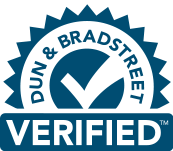Editor’s note: This post was originally published on 8/31/17 and has been updated for accuracy and comprehension.
How can I increase patient acquisition using video?
- Don’t use YouTube as your video player.
- Keep your patient acquisition videos short.
- Publish an audio transcript with your video.
- Avoid using a static “talking head” in your educational videos.
- Boost the organic reach of your video by using the best keywords for a specific topic.
- Create a landing page on your website.
Healthcare marketing has changed.
In today’s digital world, prospective patients are now active partners in their medical journeys.
You have the unique opportunity to increase patient acquisition for your hospital when you become part of their story – through your healthcare marketing strategies.
Many organizations have expanded their priorities from simply growing their online and social media presence to engaging with patients and consumers on various platforms.
It’s a match made in heaven: a hungry audience eager to research a vast amount of health-related topics and plenty of in-house experts.
And there’s no better engagement tool than video marketing.
Video can connect and educate while humanizing the organization. And they’re highly-effective when utilized across the patient journey.
What types of videos should you create to increase patient acquisition?
We have outlined the various kinds below and aligned them with the stages a patient will go through as they decide whether or not to “buy.”
You’ll also find some video best practices so that you can get the most out of your produced video.
Stage 1: Awareness
It’s important to connect with consumers before they have healthcare needs.
You can do this organically by having your video rank on a search engine, and get found by consumers seeking healthcare information online.
Or it can be pushed out via a paid online campaign.
The goal of the following types of videos is to get on the consumer’s radar and to start developing credibility and trust.
1. Educational videos
Some potential topics you could cover include preventative healthcare subjects such as:
- Cancer.
- Heart disease.
- Weight loss.
- Nutrition.
- Mental health.
The videos could feature in-house experts and be comprised of short, digestible vignettes.
This will position you as the authority for medical help and will help increase patient acquisition.
Video Distribution Tip:
Share the videos on social media, on your website, blog or e-newsletters, and encourage consumers to sign up to receive more tips and videos via email.
2. “Advancements in medicine” video series
Providing information on recent advancements in medicine for patients demonstrates your trustworthiness as an authority on medical care.
It will position you and your staff as leaders in technology for prevention, detection, intervention, therapy, and wellness.
Video Distribution Tip:
Share the videos on social media, on your website, blog or e-newsletters, and encourage consumers to sign up to receive more tips and videos via email.
Stage 2: Consideration
Your potential patient is researching a specific health problem or current need. This could be anything from symptoms to test results to a diagnosis.
The goal of the following types of videos is to provide helpful information that demonstrates credibility and expertise.
This is critical information that a patient needs NOW – without this content you could lose this new customer.
1. “Health topic research education” video
This video is going to provide highly useful information to your potential patient who is researching a related health topic.
Some examples are “Questions to ask your doctor about genetic cancer tests” or “Treatment options for prostate cancer.”
Video Distribution Tip:
Publish in a hospital patient resource section on your website, on a website services page, or as a blog, send it out in an e-newsletter, and to incoming potential patient inquiries.
2. Paid social media videos
Use the health topic research education videos by editing them into shorter 30- to 60-second videos more suitable for social media.
Launch a small paid social media campaign to share your content with your target audience.
Video Distribution Tip:
Use these in paid social media campaigns.
Stage 3: Conversion
This is the decision-making stage, where potential patients will pull the trigger and purchase your medicine or test.
Once they get to this point, patients have done their research about the problem and different treatment options.
Now, they’re searching for a healthcare professional or organization who can provide the care they need to solve their medical problems.
The goal of videos at this stage is to entice your potential patients to take action.
Videos should demonstrate why your organization and team are the best choices for care.
This is the last stage of the patient acquisition journey.
1. Patient testimonials or stories
Let an objective, third-party, talk highly of your hospital, instead of someone in-house.
A first-person success story could be your best approach to connecting and resonating with prospective patients.
Video Distribution Tip:
Align these videos with website services page and/or use on social media.
2. Service explainer video
Use short two- to three-minute videos to highlight your specific areas of service (cancer, orthopedics, cardiology, etc.).
This is your opportunity to demonstrate key benefits and expertise, as well as visually feature happy patients, staff and your facility.
Video Distribution Tip: Promote the video on a website services web page and also send it to incoming potential patient inquiries via email.
3. Paid social media videos
Create short 30- to 45-second video ads that target people who are looking for a healthcare solution now.
The video can demonstrate your organization’s expertise and key differentiators in solving the health care issue.
Video Distribution Tip:
Send it out via paid social media campaigns.
Increase patient acquisition with these video best practices
Not all videos are created equal.
No matter the type of video, there are important tactics that can help potential patients find your video, plus enhance the viewer’s engagement with the video.
Here are a few best practices for increasing patient acquisition:
- Don’t use YouTube as your video player if you want visitors to come to your website through an organic search. Instead, use a third-party video player like Wistia.
- Keep your patient acquisition videos short, preferably one to two minutes, and three minutes max.
- Publish an audio transcript with your video so search engines can find your video for search ranking.
- Avoid using a static “talking head” in your educational videos, which is likely to quickly lose the viewer’s interest. Instead, use b-roll video or motion graphics for better viewer engagement and to reinforce key points.
- Boost the organic reach of your video by using the best keywords for a specific topic via talking points from your featured participants or in the voice-over script.
- Create a landing page on your website with strong supporting text and a measurable call to action, for videos designed to convert consumers. You can also use video as the background in the “hero image” section (or the very top section) of a landing page.
Use video to connect with potential patients
By providing education on engaging topics, you’ll be able to raise awareness and increase your patient acquisition.
First, align the right types of videos with your potential patients’ position in the buyers’ journey and make the crucial connections that will earn you their trust. Then, follow the best practices to incorporate video into your healthcare marketing plan.







